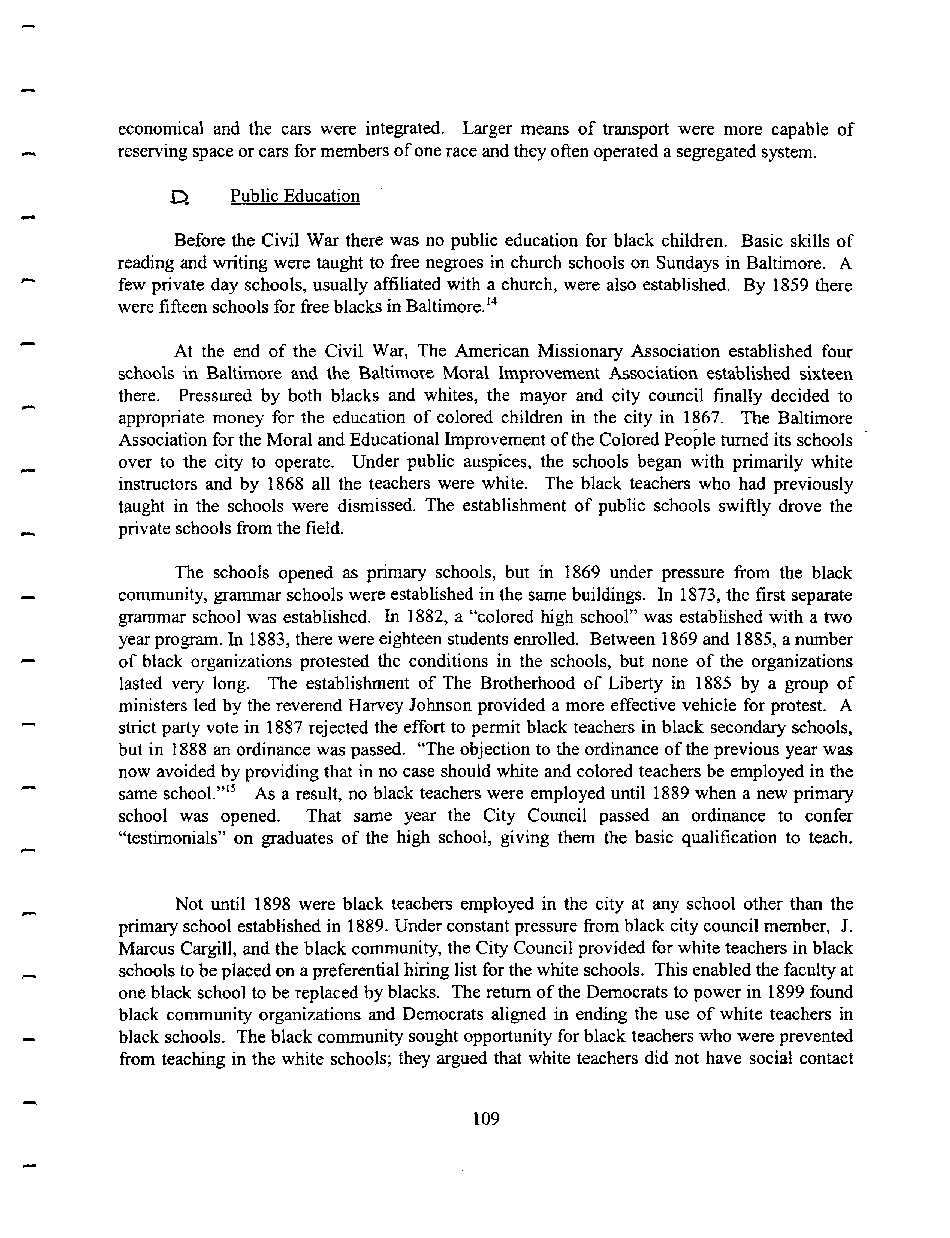|
economical and the cars were integrated. Larger means of transport were more capable of
reserving space or cars for members of one race and they often operated a segregated system.
Ci Public Education
Before the Civil War there was no public education for black children. Basic skills of
reading and writing were taught to free negroes in church schools on Sundays in Baltimore. A
few private day schools, usually affiliated with a church, were also established. By 1859 there
were fifteen schools for free blacks in Baltimore.14
At the end of the Civil War, The American Missionary Association established four
schools in Baltimore and the Baltimore Moral Improvement Association established sixteen
there. Pressured by both blacks and whites, the mayor and city council finally decided to
appropriate money for the education of colored children in the city in 1867. The Baltimore
Association for the Moral and Educational Improvement of the Colored People turned its schools
over to the city to operate. Under public auspices, the schools began with primarily white
instructors and by 1868 all the teachers were white. The black teachers who had previously
taught in the schools were dismissed. The establishment of public schools swiftly drove the
private schools from the field.
The schools opened as primary schools, but in 1869 under pressure from the black
community, grammar schools were established in the same buildings. In 1873, the first separate
grammar school was established. In 1882, a "colored high school" was established with a two
year program. In 1883, there were eighteen students enrolled. Between 1869 and 1885, a number
of black organizations protested the conditions in the schools, but none of the organizations
lasted very long. The establishment of The Brotherhood of Liberty in 1885 by a group of
ministers led by the reverend Harvey Johnson provided a more effective vehicle for protest. A
strict party vote in 1887 rejected the effort to permit black teachers in black secondary schools,
but in 1888 an ordinance was passed. "The objection to the ordinance of the previous year was
now avoided by providing that in no case should white and colored teachers be employed in the
same school."15 As a result, no black teachers were employed until 1889 when a new primary
school was opened. That same year the City Council passed an ordinance to confer
"testimonials" on graduates of the high school, giving them the basic qualification to teach.
Not until 1898 were black teachers employed in the city at any school other than the
primary school established in 1889. Under constant pressure from black city council member, J.
Marcus Cargill, and the black community, the City Council provided for white teachers in black
schools to be placed on a preferential hiring list for the white schools. This enabled the faculty at
one black school to be replaced by blacks. The return of the Democrats to power in 1899 found
black community organizations and Democrats aligned in ending the use of white teachers in
black schools. The black community sought opportunity for black teachers who were prevented
from teaching in the white schools; they argued that white teachers did not have social contact
109
�
|

